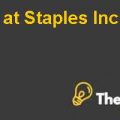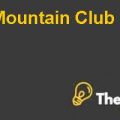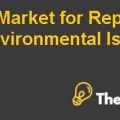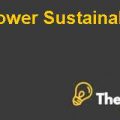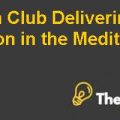
Competition in the Express-Delivery Market
There were 3 dimension of the US package-delivery market, which constituted a $45-billion market. The three dimensions are weight, mode and time. The US package delivery industry held a $25billion portion, which represented the air-express segment whereas all of the business activities of FedEx were driven from this segment UPS held only 22% of its revenue from this segment. The dimensions in which both the companies held significant rivalry are summarized in these major events.
Customer focus is a very important and key element in a service industry where both companies had put in great emphasis by focusing on what companies need and by customizing their services accordingly.
UPS started price competition by charging low prices but with time both companies got set into a regular price pattern.
Operational re-engineering was also a dimension that was aimed to achieve operational efficiency in both companies; it included innovation and new investments.
IT systems were used by both companies to manage their operation especially handling of each package.
Improved Logistics services and expansion, Logistic services with innovation and cutting edge technology enabled each company to hold complete logistics of corporate clients.
Heavy capital expenditure by each company showed the determination to innovate and to become the market leader, both the companies almost match each other’s capital investments.
International Package-Delivery Market
FedEx failed miserably in the European market that entered late in the European market but it was able to establish itself. FedEx made approximately a loss of $1 billion during the 8 years in the European market, whereas UPS invested $1 billion in the market after just being there for 7 years. FedEx still continues to deliver in Europe with the use of local partners; FedEx made Asia its strong hold by setting up a hub in Philippines.
China had started to become a very attractive import export market with all the foreign investments. China is expected to become the largest economy of the world by 2039. Air-cargo had been rapidly growing in China and both companies are firmly focused upon China’s import export market that has a value of $1billion.
With the agreement between the US and China, air travel has been allowed between both the countries that includes parcel delivery carries. US carriers had a reach of 5 Chinese cities and Chinese carriers had reach of 12 US cities.
UPS and FedEx both approached this opportunity with strong pursuit as they both believed that this was a golden opportunity.
2.) Highlight the Finance Model unitized in the case CAPM, WACC, and TIME VALIE OF MONEY
Economic Value Added is used to evaluate the performance of the company, which utilizes the concept of WACC and CAPM whereas the present value of future EVA is used to determine Market Value Added (MVA) that utilizes the Time Value of Money concept.
EVA is used within the concepts of corporate finance to evaluate if the company has been able to achieve value creation. Value creation is denoted by the profits generated by the company and if it is above the desired return of the company then it is said that the company has generated value. In addition, it could be said as profit generated by the company minus the cost of raising the capital.
Whereas, the cost of capital is denoted as Weighted Average Cost of Capital (WACC), it is the bare minimum of the profit that a company has to generate for all the investors otherwise the investors will withdraw their investment. It is the desired return of the shareholders that is calculated by multiplying the cost of equity of the company i.e. the cost incurred by the company while raising the equity, with the total percentage of equity of the company and add this with the cost of debt i.e. the cost incurred in raising the debt, with the total percentage of debt the tax effect will also be taken out of the cost of debt.
The cost of equity is calculated by using the Capital Asset Pricing Model (CAPM); it incorporates the asset beta of the company, risk free rate of return and the risk of the market.
This equation incorporates the risk of the market with the risk of the company through the beta of the company that in turn gives cost of equity...........................................
This is just a sample partial case solution. Please place the order on the website to order your own originally done case solution.

